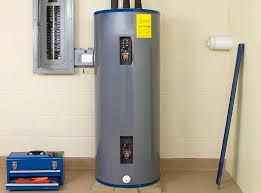We've encountered this article on How to Maintain a Hot Water Heater in a Few Simple Steps down the page on the web and decided it made good sense to quickly share it with you in this article.

Warm water is crucial for daily comfort, whether it's for a refreshing shower or washing dishes. To ensure your warm water system runs effectively and lasts longer, normal maintenance is vital. This short article provides functional suggestions and understandings on how to keep your home's hot water system to prevent disruptions and expensive fixings.
Introduction
Maintaining your home's hot water system might appear daunting, but with a couple of easy steps, you can guarantee it runs smoothly for several years to find. This overview covers whatever from recognizing your hot water system to do it yourself upkeep tips and knowing when to contact professional help.
Significance of Keeping Your Warm Water System
Regular maintenance not just expands the lifespan of your hot water system but also guarantees it operates effectively. Disregarding maintenance can bring about decreased effectiveness, higher energy expenses, and also early failure of the system.
Signs Your Warm Water System Needs Maintenance
Understanding when your warm water system needs focus can prevent major problems. Look out for indications such as irregular water temperature level, unusual sounds from the heating system, or rusty water.
Comprehending Your Hot Water System
Prior to diving into upkeep jobs, it's practical to recognize the basic elements of your warm water system. Commonly, this includes the water heater itself, pipelines, anode rods, and temperature level controls.
Month-to-month Maintenance Tasks
Regular regular monthly checks can assist capture minor issues before they intensify.
Flushing the Water Heater
Purging your hot water heater removes debris buildup, enhancing efficiency and extending its life.
Checking and Changing Anode Rods
Anode rods stop corrosion inside the tank. Evaluating and replacing them when broken is crucial.
Inspecting and Readjusting Temperature Level Settings
Changing the temperature settings ensures ideal efficiency and safety and security.
Do It Yourself Tips for Maintenance
You can perform several maintenance tasks on your own to maintain your hot water system in leading condition.
Looking for Leaks
Consistently examine pipes and connections for leaks, as these can bring about water damages and greater bills.
Testing Pressure Alleviation Valves
Evaluating the stress relief valve guarantees it functions appropriately and prevents too much stress buildup.
Shielding Pipes
Protecting warm water pipelines lowers heat loss and can save power.
When to Call an Expert
While do it yourself upkeep is useful, some problems call for professional knowledge.
Complex Problems Calling For Expert Assistance
Instances consist of significant leaks, electric troubles, or if your hot water heater is continually underperforming.
Regular Professional Maintenance Advantages
Expert maintenance can consist of comprehensive examinations, tune-ups, and making sure conformity with security criteria.
Conclusion
Routine upkeep of your home's warm water system is vital for performance, long life, and cost savings. By complying with these ideas and recognizing when to look for professional help, you can guarantee a trusted supply of warm water without unforeseen disruptions.
How to Maintain an Instant Hot Water Heater
Before tinkering with your hot water heater, make sure that it’s not powered on. You also have to turn off the main circuit breaker and shut off the main gas line to prevent accidents. Also turn off the water valves connected to your unit to prevent water from flowing into and out of the appliance. 2. When you’re done, you have to detach the purge valves’ caps. These look like the letter “T†and are situated on either side of the water valves. Doing so will release any pressure that has accumulated inside the valves while at the same time avoid hot water from shooting out and burning your skin. 3. When the purge valves’ caps are removed, you have to connect your hosing lines to the valves. Your unit should have come with three hoses but if it didn’t, you can purchase these things from any hardware or home repair shops. You can also get them from retail stores that sell water heating systems. Read the user’s manual and follow it to complete this task properly. When the hosing lines are connected, open the purge port’s valves. 4. You should never use harsh chemical cleaners or solutions when cleaning your unit. Make use of white vinegar instead. It should be undiluted and you’ll probably use about 2 gallons. 5. Now flush your water heater. This task should probably take about 40 minutes. We can’t give you specific directions for this because the procedure is carried out depending on the type, model and brand of your heater. With that being said, refer to the user’s manual. 6. When you’re done draining the unit, you have to turn off the purge port valves again. Remove the hosing lines that you earlier installed on each of the water valves. Put the valve caps (purge port) back in their respective places and be very careful so as not to damage the rubber discs that are found inside these caps. 7. Now that everything’s back in place, check your user’s manual again to find out how to reactivate your water heating system. 8. Once it is working, turn one of your hot water faucets on just to let air pass through the heater’s water supply pipes. Leave the tap on until water flows smoothly out of it. https://www.orrplumbing.com/blog/2014/september/how-to-maintain-an-instant-hot-water-heater/

Hopefully you enjoyed our article on Tips For Maintaining Your Hot Water Heater. Thanks for taking a few minutes to browse our content. Sharing is good. Helping others is fun. Bless you for your time. Please check our blog back soon.
Call Us Today